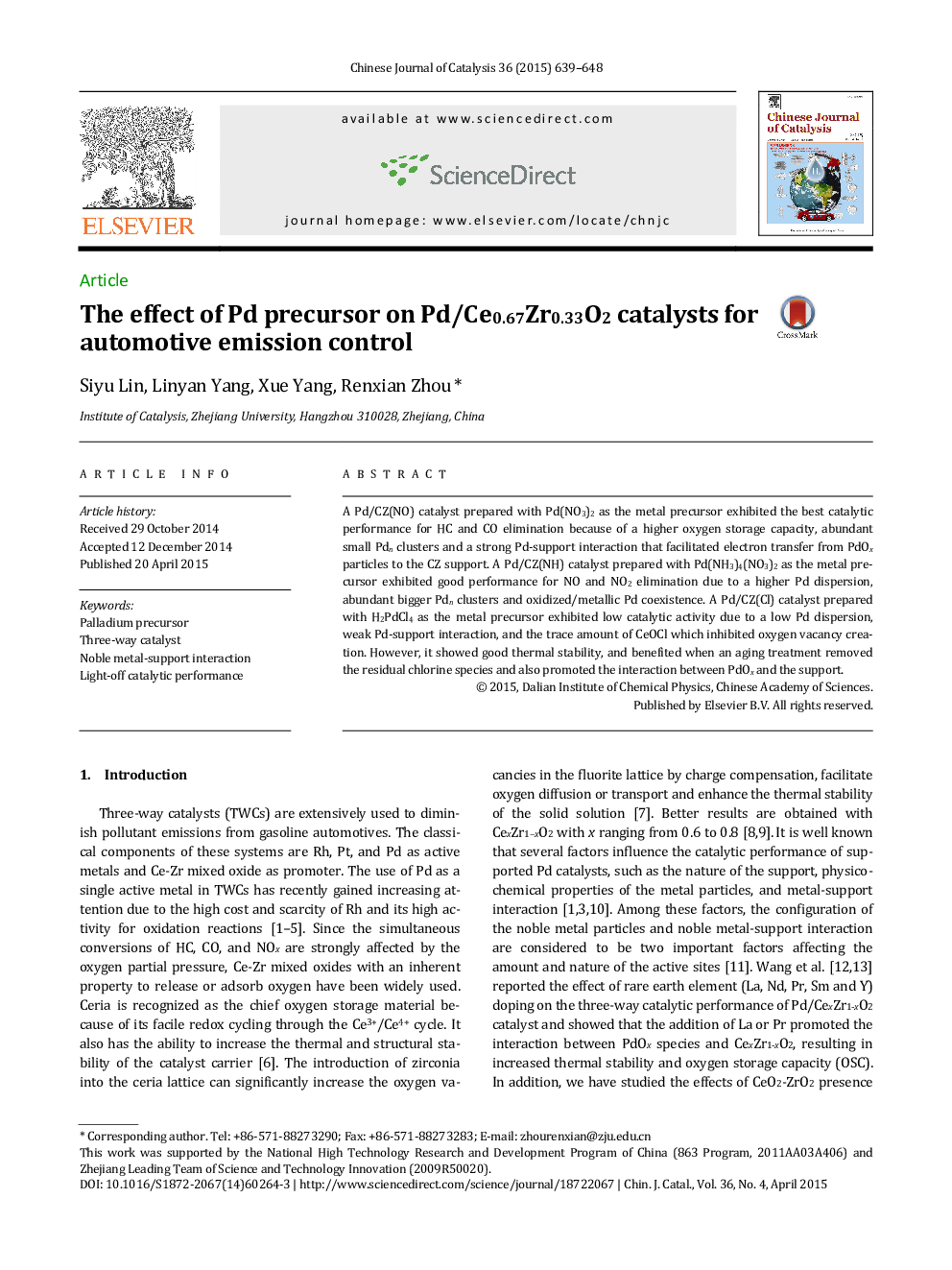| Article ID | Journal | Published Year | Pages | File Type |
|---|---|---|---|---|
| 58991 | Chinese Journal of Catalysis | 2015 | 10 Pages |
A Pd/CZ(NO) catalyst prepared with Pd(NO3)2 as the metal precursor exhibited the best catalytic performance for HC and CO elimination because of a higher oxygen storage capacity, abundant small Pdn clusters and a strong Pd-support interaction that facilitated electron transfer from PdOx particles to the CZ support. A Pd/CZ(NH) catalyst prepared with Pd(NH3)4(NO3)2 as the metal precursor exhibited good performance for NO and NO2 elimination due to a higher Pd dispersion, abundant bigger Pdn clusters and oxidized/metallic Pd coexistence. A Pd/CZ(Cl) catalyst prepared with H2PdCl4 as the metal precursor exhibited low catalytic activity due to a low Pd dispersion, weak Pd-support interaction, and the trace amount of CeOCl which inhibited oxygen vacancy creation. However, it showed good thermal stability, and benefited when an aging treatment removed the residual chlorine species and also promoted the interaction between PdOx and the support.
Graphical AbstractPd/CZ(NO) and Pd/CZ(NH) catalysts showed different behavior for HC, CO and NOx elimination due to the presence of small or big Pdn clusters. A Pd/CZ(Cl) catalyst showed low catalytic activity due to poor Pd dispersion and trace amounts of CeOCl that inhibited oxygen vacancy creation.Figure optionsDownload full-size imageDownload as PowerPoint slide
